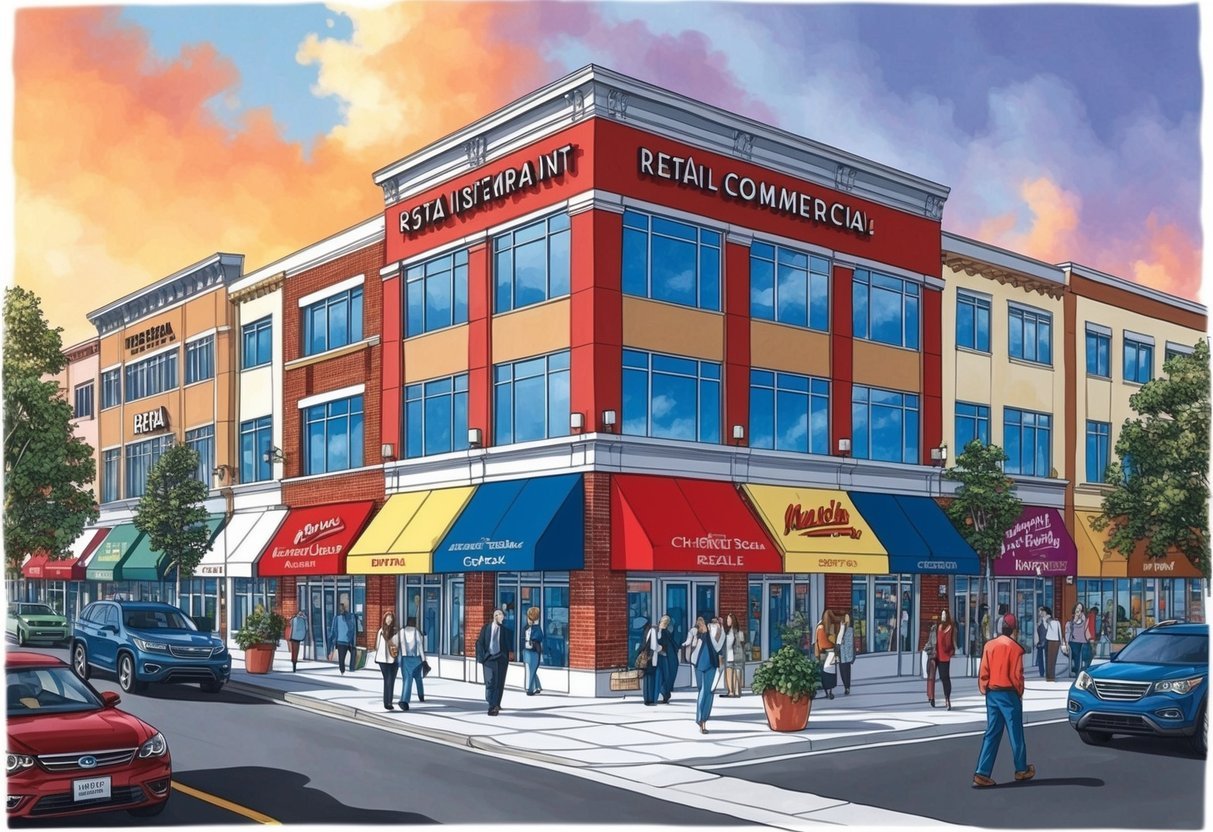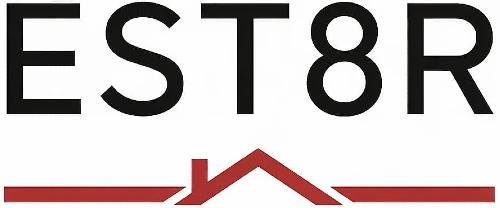Investing in real estate offers various opportunities, each with its unique benefits and challenges.
Among these opportunities, multi-tenant commercial buildings stand out as a compelling choice for investors seeking consistent yields.
By allocating resources to this type of investment, we have the potential to maximize our returns while also managing risk effectively.

Why should we consider multi-tenant commercial buildings? They provide a diversified source of income, reducing the dependence on a single tenant and thus enhancing financial stability.
Additionally, these properties attract a diverse tenant base, making them resilient against market fluctuations.
This article will explore some of the key reasons why this investment strategy can be advantageous for our portfolio.
1) High Rental Income Potential
When investing in multi-tenant commercial buildings, one of the primary attractions is the high rental income potential.
Unlike single-tenant properties, multi-tenant buildings allow us to receive income from multiple rental streams.
Diversification of tenants can help to stabilize income.
By housing several businesses or individuals within one property, we reduce reliance on a single tenant’s financial stability.
This setup not only increases cash flow but also mitigates risk.
Rental spaces in commercial buildings tend to appreciate over time, offering greater returns as market demands shift.
This appreciation aligns with market growth, allowing us to capture increasing rental rates.
In growing urban areas, the demand for commercial spaces can rise rapidly.
Moreover, commercial properties often involve longer lease terms compared to residential leases.
This longer duration can result in reliable and predictable rental income, simplifying financial planning.
We find that attractive lease agreements in commercial real estate can include provisions such as rent escalations.
Such terms allow rental income to increase regularly without renegotiating leases, ensuring that earnings keep pace with inflation.
2) Diversified Tenant Base

When it comes to investing in multi-tenant commercial buildings, a diverse tenant base offers significant advantages.
By having tenants from various industries, we spread the financial risk.
This diversity helps ensure that fluctuations in one sector do not drastically impact our overall rental income.
A varied tenant base means that our properties benefit from different revenue streams.
Since tenants come from multiple sectors, we are less reliant on the success of any single industry.
This creates a more stable and predictable cash flow for our investments.
A unique benefit of a diverse tenant base is reduced vacancy risk.
If one business decides to leave or experiences financial difficulties, the impact on our rental income is minimized.
Meanwhile, other tenants continue to fulfill their lease obligations.
Additionally, appealing to a wider range of tenants can enhance the desirability of our properties.
Businesses seek spaces in thriving environments, and a diverse mix of tenants can contribute to a vibrant atmosphere.
This can potentially make our commercial buildings more attractive to prospective tenants.
Moreover, a diversified tenant base can lead to longer lease terms.
Tenants appreciate the stability and variety in a multi-tenant property, which may encourage them to renew their leases.
This contributes to reduced turnover and additional savings on maintenance and marketing costs.
3) Professional Property Management

When we choose to invest in multi-tenant commercial buildings, one of the significant advantages is the opportunity to utilize professional property management services.
These services help streamline our property operations by taking charge of day-to-day management tasks.
This professional approach allows us to focus on broader business strategies rather than getting bogged down with daily operational issues.
Property managers handle lease administration, ensuring that tenant agreements are correctly executed and up-to-date.
They also manage rent collection, maintenance requests, and other tenant communications.
This comprehensive management relieves us from the direct responsibilities of managing multiple leases, ensuring compliance and maximization of revenue.
Additionally, experienced property managers have a deep understanding of market trends and offer valuable insights to optimize rental income.
Their expertise in tenant relations also helps reduce vacancies and turnover, enhancing the value and cash flow stability of our investment.
By maintaining the property in top condition, they help attract and retain reputable tenants.
This professional upkeep not only enhances the building’s appeal but also contributes to its long-term appreciation.
Furthermore, property managers can offer guidance on complying with local regulations and building codes.
This reduces our risk of incurring fines and penalties due to non-compliance.
Their understanding of legal requirements ensures that our investment is protected from potential legal challenges.
4) Long-term lease agreements
When it comes to multi-tenant commercial buildings, one of the notable advantages is the flexibility in lease agreements.
Typically shorter than those for single-tenant properties, these agreements provide opportunities for both tenants and landlords to adjust terms more frequently.
This adaptability allows us to respond to market changes quickly, ensuring that rental rates remain competitive and aligned with current economic conditions.
For landlords, having multiple tenants means there’s a reduced risk of vacancy.
Even if one tenant’s lease ends, others continue to contribute to the cash flow.
This diversification minimizes the impact of a single vacancy on the property’s income.
Tenants benefit too, as they aren’t locked into decade-long commitments.
This elasticity offers them opportunities to expand or reduce leased space based on their business needs.
With shorter leases, we can also elevate the property’s market value by attracting high-value tenants.
These agreements provide landlords the option to update, refurbish, and re-lease spaces more effectively.
Moreover, regular lease renewals offer opportunities to negotiate terms and adjust rent, potentially leading to higher returns.
We can update rents to reflect improvements and market trends, enhancing financial performance.
5) Reduced vacancy risks

When we invest in multi-tenant commercial buildings, we significantly lower the risk of prolonged vacancies.
Unlike single-tenant properties, these buildings feature multiple tenants, which means that even if a tenant vacates, other tenants continue to generate income for us.
This diversity in tenancy helps us maintain a more consistent cash flow.
The stability provided by multiple tenants also gives us more time to address any vacancies that might occur.
This is particularly beneficial in volatile markets where tenant turnover can be frequent.
Having a diverse range of tenants allows us to spread out the economic risks, reducing the impact on our overall investment.
We also have greater flexibility in managing leases and accommodating new or existing tenants.
By offering varied lease terms, we can attract a broader spectrum of businesses, which enhances our ability to fill any vacant spaces quickly.
This approach minimizes downtime and ensures that our property remains an attractive option for tenants.
Furthermore, the presence of multiple tenants enhances the marketability of a property.
Prospective tenants often find these buildings appealing because they offer a community atmosphere and amenities enjoyed by various businesses and customers.
The synergy created among different tenants can lead to increased foot traffic and business opportunities.
6) Tax advantages and deductions

Investing in multi-tenant commercial properties gives us access to several tax benefits that can enhance the overall profitability of our investments.
These benefits can help offset income and reduce the tax burden associated with real estate ownership.
Depreciation is a key tax advantage.
By depreciating the building over a specified timeframe, we can deduct a portion of the property’s value from our taxable income each year.
This reduction can substantially decrease our overall tax liabilities.
Property management expenses are also deductible.
These can include maintenance costs, property management fees, insurance, and utilities.
By deducting these expenses, we can further reduce our taxable income, thereby enhancing the financial return on our investment.
Mortgage interest is another deductible expense.
Interest payments made on loans used to acquire or improve our commercial properties can be subtracted from our taxable income.
This deduction can significantly lighten our financial load during the lifecycle of a mortgage.
Another potential benefit is the 1031 exchange, a regulation allowing us to defer capital gains taxes by reinvesting proceeds from sold properties into new real estate assets.
This strategy helps maintain capital growth without immediate tax penalties.
Understanding Multi-Tenant Commercial Buildings

When considering real estate investments, multi-tenant commercial buildings offer substantial advantages.
These properties provide diversification, reduce investment risks, and increase potential income streams.
Definition and Characteristics
Multi-tenant commercial buildings are properties designed to accommodate multiple business tenants.
They feature shared spaces and facilities, creating a dynamic environment.
These properties typically include varied amenities to attract diverse tenants, from small businesses to larger enterprises.
Unlike single-tenant buildings, multi-tenant properties distribute risk as they aren’t reliant on a single occupant for income.
Various tenants may occupy the property simultaneously, ensuring steady revenue flow and minimizing vacancy impact.
This setup allows for flexible lease terms, catering to different commercial needs and contributing to a balanced tenant mix offering stability and resilience.
Types of Multi-Tenant Commercial Properties
Multi-tenant properties can include office buildings, shopping centers, and industrial parks. Office buildings might house several companies across different industries, offering dynamic work environments. Shopping centers feature a variety of retail tenants, from boutique stores to large anchor tenants like department stores.
Industrial parks, meanwhile, might comprise warehouses, distribution centers, and manufacturing spaces, accommodating varying logistical and operational requirements.
Multi-family apartment complexes, although residential, operate similarly in the commercial real estate world with shared amenities like gyms and parking facilities.
Regardless of the type, these properties provide the opportunity to customize spaces and diversify the tenant base.
This adaptability becomes a key driver for potential returns, making multi-tenant buildings a valuable aspect of any real estate investment portfolio.
Benefits of Investing in Multi-Tenant Commercial Buildings

Investing in multi-tenant commercial buildings offers numerous advantages, most notably through income diversification and risk mitigation.
These benefits combine to create a more secure and potentially profitable investment strategy over time.
Income Diversification
Multi-tenant commercial properties allow for numerous revenue streams.
By renting out multiple units within a single building, we can effectively generate consistent cash flow from various tenants.
This approach reduces dependency on a single lessee and provides more stability.
The ability to have distinct leases with diverse businesses means rent adjustments can be staggered.
In this way, we ensure that rental income is not only regular but can also adapt to inflation over time.
Our portfolio’s performance is boosted by the diverse tenant mix offering different growth potentials, making the investment robust.
Risk Mitigation
A significant benefit of multi-tenant buildings is the distribution of risk.
Having multiple tenants means that even if one unit becomes vacant, others continue to generate income.
This setup minimizes the financial impact of tenant turnover.
The likelihood of all tenants leaving simultaneously is low, providing us with some economic security.
Investing in these buildings also spreads liability.
As landlords, we’re only accountable for our share of the investment.
This feature lowers our potential financial exposure, making it an appealing strategy for those cautious about risk.
The diversity of tenants, each with their varied industries, further insulates us from market-specific risks, fostering a resilient investment environment.
Factors to Consider Before Investing

Investing in multi-tenant commercial buildings requires careful evaluation of several important factors. Location analysis and tenant mix significantly influence the success of your investment.
Location Analysis
When investing, understanding the importance of location cannot be overstated.
A prime location can enhance property value, attract quality tenants, and promise higher returns.
We examine local market trends, infrastructure developments, and nearby amenities.
Proximity to transportation links, such as highways and public transit, is crucial for tenant accessibility.
A comprehensive assessment of the neighborhood’s economic stability and growth potential aids our decision-making.
We also consider zoning laws and future development plans, as these can impact the property’s value and rental prospects.
A thorough location analysis ensures alignment with our investment strategy.
Tenant Mix
Selecting the right tenant mix is vital for maintaining a balanced and profitable investment.
We aim for a diverse tenant base, reducing dependence on any single business or industry.
A well-balanced tenant mix supports consistent cash flow and minimizes risk during economic shifts.
We assess the financial stability and reputation of potential tenants, as their success directly affects our property’s performance.
Understanding tenant needs allows us to provide amenities and lease terms that attract and retain occupants.
Evaluating the synergy between different business types within the property can also foster a thriving commercial ecosystem.
Careful consideration of the tenant mix enhances property resilience and long-term success.
Frequently Asked Questions

Investing in multi-tenant commercial buildings offers notable benefits such as portfolio diversification and stable cash flow.
We address the factors that influence investment outcomes, including tenant mix and economic cycles.
What are the advantages of multi-tenant properties for portfolio diversification?
Multi-tenant properties allow us to spread our investment risk across various tenants.
This variety can lead to more stable income streams, reducing the impact of any single tenant’s financial troubles on our overall returns.
How does tenant mix impact the investment potential of commercial properties?
The mix of tenants in a property plays a significant role in determining its appeal and income stability.
By attracting tenants from different industries, we decrease reliance on any one sector, thereby improving the property’s resilience against economic shifts.
What are the potential risks and rewards of investing in multi-tenant commercial real estate?
We encounter risks such as tenant turnover and management complexities.
Nonetheless, rewards include high rental yields and reduced vacancy rates due to the diversity of tenants, leading to steady income even if one space becomes vacant.
How do economic cycles affect multi-tenant commercial property investments?
Economic cycles impact tenant demand and rental rates.
During economic booms, occupancy rates and rents typically rise, whereas downturns may require us to employ flexible strategies to retain tenants, ensuring continued cash flow.
What are the key factors to consider when evaluating the profitability of a multiplex investment?
Key factors include tenant quality, lease terms, location, and property condition.
We must assess potential income against maintenance costs and market conditions to determine profitability and gauge whether the investment aligns with our financial goals.
How does commercial property performance measure up against residential investments in terms of returns and stability?
Commercial properties, including multi-tenant buildings, often offer higher returns and longer lease terms compared to residential investments.
They also provide more predictable income streams, thereby enhancing investment stability and attractiveness.

